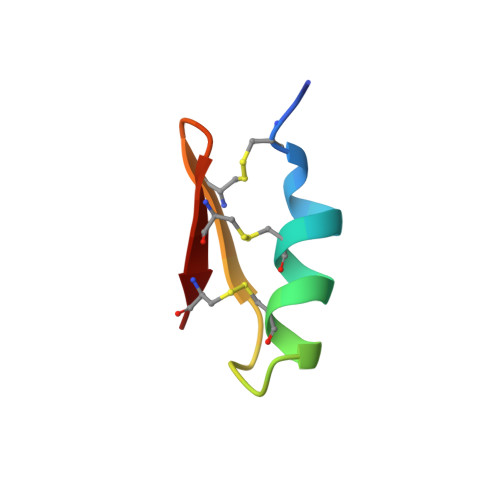Experimental conversion of a defensin into a neurotoxin: implications for origin of toxic function
Zhu, S., Peigneur, S., Gao, B., Umetsu, Y., Ohki, S., Tytgat, J.(2014) Mol Biol Evol 31: 546-559
- PubMed: 24425781
- DOI: https://doi.org/10.1093/molbev/msu038
- Primary Citation of Related Structures:
2RTY - PubMed Abstract:
Scorpion K(+) channel toxins and insect defensins share a conserved three-dimensional structure and related biological activities (defense against competitors or invasive microbes by disrupting their membrane functions), which provides an ideal system to study how functional evolution occurs in a conserved structural scaffold. Using an experimental approach, we show that the deletion of a small loop of a parasitoid venom defensin possessing the "scorpion toxin signature" (STS) can remove steric hindrance of peptide-channel interactions and result in a neurotoxin selectively inhibiting K(+) channels with high affinities. This insect defensin-derived toxin adopts a hallmark scorpion toxin fold with a common cysteine-stabilized α-helical and β-sheet motif, as determined by nuclear magnetic resonance analysis. Mutations of two key residues located in STS completely diminish or significantly decrease the affinity of the toxin on the channels, demonstrating that this toxin binds to K(+) channels in the same manner as scorpion toxins. Taken together, these results provide new structural and functional evidence supporting the predictability of toxin evolution. The experimental strategy is the first employed to establish an evolutionary relationship of two distantly related protein families.
Organizational Affiliation:
Group of Animal Innate Immunity, State Key Laboratory of Integrated Management of Pest Insects & Rodents, Institute of Zoology, Chinese Academy of Sciences, Chaoyang District, Beijing, China.














